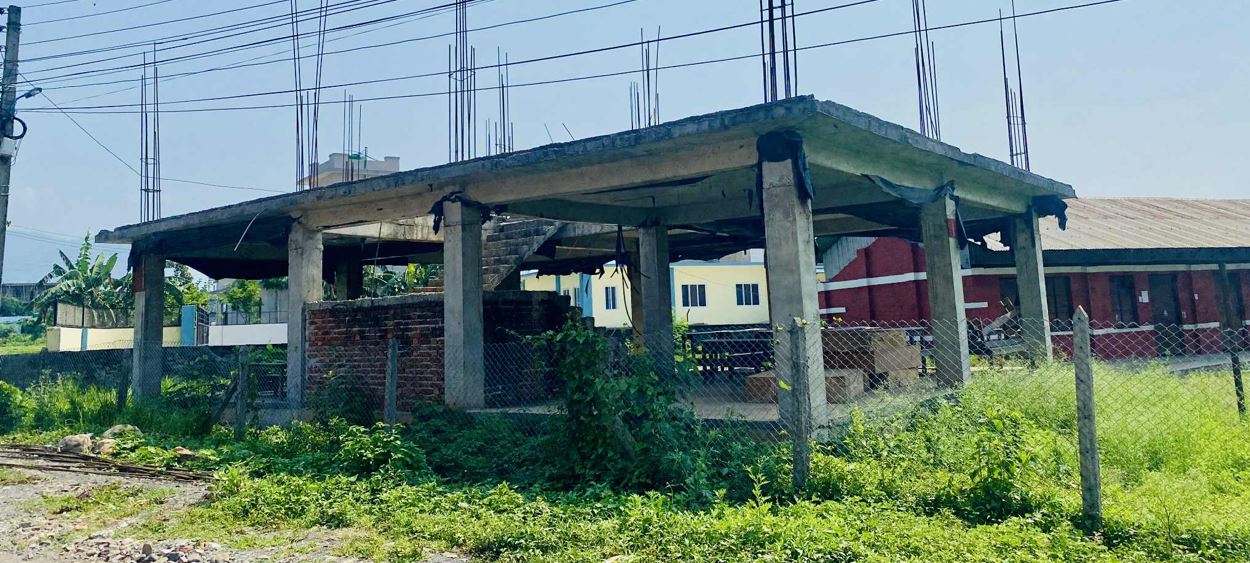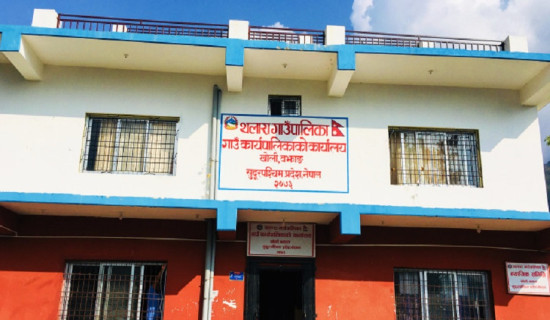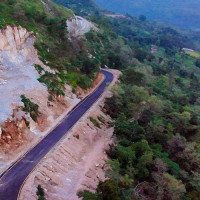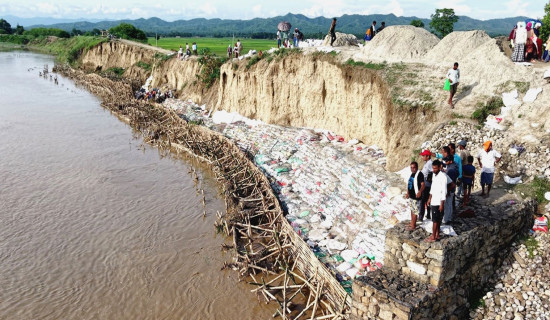- Wednesday, 16 July 2025
Incomplete school buildings mocking local governments
By Bomlal Giri,Nawalpur, June 21: Students at Janabikas Bidyashram Basic School in Kawasoti Municipality-3 in the district are compelled to take their classes in a dilapidated building roofed over with corrugated zinc sheets even in the intense summer heat of June.
Right next to it stands an incomplete concrete building. Left unfinished for the past four years in a lack of budget is making mockery of the local government, which is responsible for managing education up to the secondary level.
Janabikas is not a single school to have incomplete buildings in the distict. Ten
other schools in the municipality, including Gyanodaya Secondary School, Kalika
Secondary School, Nabadurga Basic School and Balkalyan Basic School have
similar incomplete school buildings standing next to the old buildings. The
students and teachers are waiting when the local levels will complete the
construction of their school buildings.
In fiscal year 2020/21, under the President’s Educational Reform Programme, a budget of Rs. 1.8 million was allocated to build two-room buildings in these 11 schools. The schools completed work based on the approved designs and technical estimates. However, the budget was not enough to complete the construction and many buildings remain unfinished.
When construction started, the students were studying in Grade 1, now they are in Grade 5. But the local government has shown no interest in completing the buildings.
Headmaster Tikaram Dumre of Nabadurga Basic School at Kawasoti-2, said that weeds are now growing inside the incomplete structures. “It is the local government’s responsibility to complete the construction of these school buildings that have remain unfinished due to lack of budget,” he said.
“But those in charge of the municipality do not want to invest in education. They have no time to think or worry about educational development,” he added. He accused the municipality of prioritising road blacktopping, granting contracts to extract river-based materials and seeking commissions over education.
Despite repeated requests over four years, the municipality has not allocated a budget for these incomplete school buildings, Dumre said. Last year, Mayor Bishnu Prasad Bhusal promised during public events to allocate funds to complete the buildings, but the promise remains unfulfilled.
In the current fiscal year, only 3 per cent of the municipality’s total budget --excluding conditional grants -- was allocated to education. Hari Prasad Neupane, Headmaster of Shanti Nikunj Secondary School in Ward 12, said that public education was simply not a priority for the municipality.
“Forget budget for new buildings, they even hesitate to release allocated funds for maintenance. When we request not to block the maintenance budget, the responsible officials respond with indifference,” he said.
Chetanath Adhikari, Headmaster of Gyanodaya Secondary School, also said that buildings remain incomplete because of the municipality’s lack of priority. “We have been regularly requesting the municipality, but they just keep stalling us with empty promises.”
Kawasoti Municipality said the buildings could not be completed due to lack of funds. Education Officer Rajan Pandey said each school needs at least Rs. 1 million to install windows, doors and paint. “The allocated budget was never enough to construct RCC (reinforced concrete) buildings. We could have used zinc roofs instead. But zinc-roofed classrooms are not suitable for students in the hot Tarai region. That is why finding alternative funding took time,” he said.
Pandey said a non-governmental organisation has now shown interest. The NGO “Right to Study” has committed to help complete the buildings of Navadurga and Kalika schools this year. According to Pandey, two schools have already completed construction by arranging their own resources. The municipality said the remaining schools will be completed gradually with the help from the provincial government, by encouraging schools to raise their own funds and by requesting support from NGOs.
The original goal of the President’s Educational Reform Programme was to improve learning facilities and develop physical infrastructure in public schools that could not be addressed through regular programmes.
From the next fiscal year 2025/26 (2082/83), the government plans to revise this programme into a strengthened National Educational Reform Programme.















